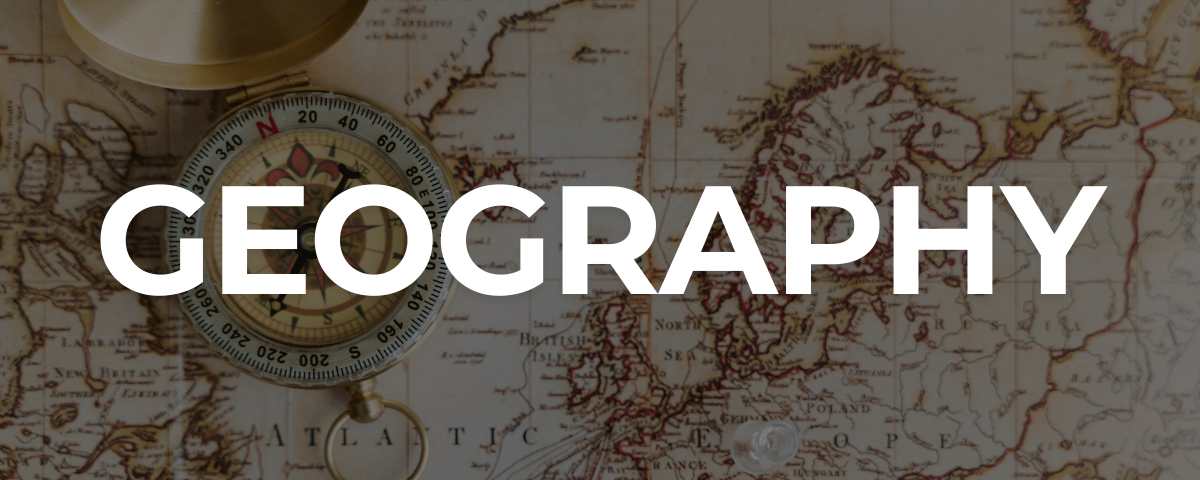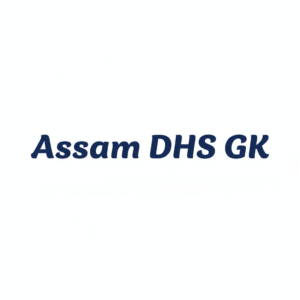Assam Geography Mcq
Explore the Top 100 Assam Geography MCQs designed for APSC, ADRE, and other State competitive exams. This comprehensive set covers key topics like national parks, rivers, minerals, climate, and physiographic regions of Assam. Master important facts like World Heritage Sites, Brahmaputra tributaries, and Assam's unique ecological zones—all in one place. Whether you're revising for exams or brushing up on your knowledge, these Assam Geography MCQs will give you the edge you need.
1. What is the corridor connecting Assam to the Indian mainland commonly called?
a) Siliguri Corridor
b) Dooars Gap
c) Assam Gate
d) Patkai Pass
Answer: a) Siliguri Corridor
2. Which town serves as the headquarters of the Baksa district?
a) Mushalpur
b) Salakati
c) Kokrajhar
d) Barama
Answer: a) Mushalpur
3. Majuli, the world’s largest river island, lies in which river?
a) Brahmaputra
b) Barak
c) Dhansiri
d) Kapili
Answer: a) Brahmaputra
4. The Tarai zone of Assam is known for which characteristic?
a) Marshy and swampy land
b) Rocky terrain
c) Desert landscape
d) Saline soil
Answer: a) Marshy and swampy land
5. Which physiographic division is known as the “horse-shoe” shaped region of Assam?
a) Barak Plain
b) Brahmaputra Valley
c) Karbi Anglong Plateau
d) North Cachar Hills
Answer: a) Barak Plain
6. Which river acts as the largest south bank tributary of the Brahmaputra?
a) Kapili
b) Dhansiri
c) Digaru
d) Kulsi
Answer: a) Kapili
7. Singhason is a peak located in which plateau?
a) Shillong
b) Karbi Anglong
c) Barail
d) Khasi
Answer: b) Karbi Anglong
8. Which town is the headquarters for the Biswanath Chariali district?
a) Tezpur
b) Biswanath Chariali
c) Golaghat
d) Morigaon
Answer: b) Biswanath Chariali
9. The Rengma Range is part of which plateau formation in Assam?
a) Central Karbi Anglong
b) Shillong
c) Dima Hasao
d) Hamren
Answer: a) Central Karbi Anglong
10. What is the average annual rainfall in Assam?
a) 100 cm
b) 230 cm
c) 350 cm
d) 175 cm
Answer: b) 230 cm
11. Which of the following districts is NOT located in the Brahmaputra Valley?
a) Dima Hasao
b) Kamrup
c) Lakhimpur
d) Barpeta
Answer: a) Dima Hasao
12. What is the area of Assam as a percentage of the total area of India?
a) 7%
b) 2.39%
c) 5%
d) 1.5%
Answer: b) 2.39%
13. The plateau region between the Brahmaputra and Barak valleys is called?
a) Karbi Anglong Plateau
b) Patkai Plateau
c) Shillong Plateau
d) Garo Hills
Answer: a) Karbi Anglong Plateau
14. Which district contains the highest peak of the Barail Range?
a) North Cachar Hills
b) Dima Hasao
c) Karbi Anglong
d) Cachar
Answer: a) North Cachar Hills
15. The phenomenon of Bordoichila in Assam refers to?
a) Pre-monsoon thunderstorms
b) Winter fogs
c) Autumn crop harvest
d) Summer heatwaves
Answer: a) Pre-monsoon thunderstorms
16. Which river forms the narrowest corridor linking Assam to North Bengal?
a) Brahmaputra
b) Teesta
c) Korotoya
d) Sonkosh
Answer: d) Sonkosh
17. The Karbi Anglong Plateau is geologically considered a part of which larger plateau system?
a) Chotanagpur
b) Malwa
c) Deccan
d) Vindhyan
Answer: a) Chotanagpur
18. Which major river originates from the Japvo peak in Nagaland?
a) Barak
b) Brahmaputra
c) Manas
d) Kapili
Answer: a) Barak
19. Which of these is a north bank tributary of the Brahmaputra?
a) Gabharu
b) Teok
c) Bhogdoi
d) Disang
Answer: a) Gabharu
20. Barail Range acts as a watershed between which two river basins?
a) Brahmaputra and Barak
b) Kapili and Dhansiri
c) Barak and Sonai
d) Brahmaputra and Manas
Answer: a) Brahmaputra and Barak
21. Which zone along the northern Assam foothills is characterized by pebbles and water disappearing into the ground?
a) Bhabar
b) Tarai
c) Char
d) Swamp
Answer: a) Bhabar
22. Which feature is formed by the Brahmaputra River's braided channels?
a) Chars and Chaporis
b) Bhabar patches
c) Deltaic islands
d) Coral reefs
Answer: a) Chars and Chaporis
23. Which year did the great earthquake cause major bank erosion in Majuli?
a) 1950
b) 1897
c) 1869
d) 1970
Answer: a) 1950
24. Which district is bordered by the Hamren Plateau to its south?
a) Karbi Anglong
b) Nagaon
c) Jorhat
d) Lakhimpur
Answer: a) Karbi Anglong
25. The Dhansiri river makes which plateau region isolated from the Naga Hills?
a) Central Karbi Anglong
b) North Cachar
c) Dima Hasao
d) Barail
Answer: a) Central Karbi Anglong
26. Which region of Assam lies on the ‘lee-ward’ side contributing to its low rainfall?
a) Lanka-Lumding area
b) Sivasagar
c) Tinsukia
d) Barpeta
Answer: a) Lanka-Lumding area
27. The Barail Range is associated mainly with which physiographic region?
a) North Cachar Hills
b) Barak Valley
c) Karbi Anglong
d) Kokrajhar
Answer: a) North Cachar Hills
28. Which river is responsible for the flash flood in Goalpara in 2004?
a) Jinari
b) Bhogdoi
c) Digaru
d) Ranga Nadi
Answer: a) Jinari
29. Which of the following industries in Assam utilizes the highest amount of limestone?
a) Cement manufacture
b) Jewelry
c) Automobile
d) Textile
Answer: a) Cement manufacture
30. The first coal mining in Assam began in which year?
a) 1865
b) 1822
c) 1899
d) 1920
Answer: a) 1865
31. Which mineral is used mainly in automobile industries and found in Karbi Anglong?
a) Sillimanite
b) Kaolin
c) Mica
d) Gypsum
Answer: a) Sillimanite
32. What was the first oil well in Assam drilled near?
a) Namdang River
b) Subansiri River
c) Dihing River
d) Kolong River
Answer: a) Namdang River
33. Which type of sediment forms the flood plains of Brahmaputra most recently?
a) Quaternary Alluvium
b) Pre-Cambrian rocks
c) Tertiary sandstone
d) Gondwana shale
Answer: a) Quaternary Alluvium
34. Which state borders Assam both on its eastern and southern sides?
a) Nagaland
b) Arunachal Pradesh
c) Mizoram
d) Manipur
Answer: d) Manipur
35. Which is the main catchment for the Kapili river?
a) Hamren Plateau
b) Dhekiajuli Plain
c) Sadiya Region
d) Dhubri Hills
Answer: a) Hamren Plateau
36. Which river forms the boundary between Karbi Anglong Plateau and Naga Hills?
a) Dhansiri
b) Digaru
c) Sonai
d) Dibru
Answer: a) Dhansiri
37. Which is the smallest district by area in Assam (per the table)?
a) Bajali
b) Majuli
c) South Salmara
d) Tamulpur
Answer: a) Bajali
38. Which century does Kalika Purana, describing Kamrupa, belong to?
a) 10th century
b) 5th century
c) 12th century
d) 8th century
Answer: a) 10th century
39. Which of the following is NOT a major north bank tributary of the Brahmaputra?
a) Bhogdoi
b) Subansiri
c) Jia Bharali
d) Buroi
Answer: a) Bhogdoi
40. The Tarai zone is best described as:
a) Water reappearing, swampy
b) Hilly highland
c) Rocky desert
d) Mangrove delta
Answer: a) Water reappearing, swampy
41. Which wildlife sanctuary is located on a riverine island in the Brahmaputra?
a) Majuli
b) Dibru-Saikhowa
c) Orang
d) Manas
Answer: a) Majuli
42. Which district in Assam is a major producer of mica?
a) Goalpara
b) Lakhimpur
c) Baksa
d) Dhubri
Answer: a) Goalpara
43. The highest peak in the Barail range is?
a) Theipibung
b) Singhason
c) Kaukaha
d) Mahadeo
Answer: a) Theipibung
44. What percentage of Assam's area is comprised by the Brahmaputra valley?
a) 72%
b) 50%
c) 25%
d) 40%
Answer: a) 72%
45. Assam shares an international border with which two countries?
a) Bhutan & Bangladesh
b) Myanmar & Nepal
c) China & Myanmar
d) Pakistan & China
Answer: a) Bhutan & Bangladesh
46. Which region is known for having extensive tea gardens on slightly higher grounds?
a) Eastern Brahmaputra Plain
b) South Tarai
c) North Bhabar
d) Kokrajhar Valley
Answer: a) Eastern Brahmaputra Plain
47. Which mountain pass connects Assam to Tibet?
a) Dihang Pass
b) Sela Pass
c) Nathu La
d) Khyber Pass
Answer: b) Sela Pass
48. The Bhur (Sandy) tracts in Assam’s Brahmaputra valley are associated with which physical feature?
a) Sandy riverine areas
b) High alluvial ridges
c) Limestone hills
d) Flooded wetlands
Answer: a) Sandy riverine areas
49. The Brahmaputra plain attains its narrowest width near which region?
a) Burapahar (between Numaligarh and Jakhalabandha)
b) Dibrugarh
c) Kokrajhar
d) Lakhimpur
Answer: a) Burapahar (between Numaligarh and Jakhalabandha)
50. Which river marks the eastern boundary of the Brahmaputra plain in Assam?
a) Lohit
b) Subansiri
c) Kapili
d) Manas
Answer: a) Lohit
51. Which organization officially recognizes World Heritage Sites?
a) UNICEF
b) United Nations
c) UNESCO
d) WHO
Answer: c) UNESCO
52. How many World Heritage Sites are there in Assam?
a) Two
b) Three
c) One
d) Four
Answer: a) Two
53. In which year was the UNESCO World Heritage Convention held?
a) 1971
b) 1972
c) 1975
d) 1978
Answer: b) 1972
54. When were the World Heritage Sites declared in Assam?
a) 1980
b) 1982
c) 1985
d) 1986
Answer: c) 1985
55. When was the Project Tiger started in Manas National Park?
a) 1972
b) 1973
c) 1975
d) 1976
Answer: b) 1973
56. What forms the southern boundary of Kaziranga National Park?
a) Karbi Anglong Plateau
b) Meghalaya
c) Brahmaputra River
d) Barak Valley
Answer: a) Karbi Anglong Plateau
57. Which is the first national park established in Assam?
a) Manas
b) Kaziranga
c) Orang
d) Nameri
Answer: b) Kaziranga
58. Which is the largest national park in Assam in terms of area?
a) Kaziranga
b) Manas
c) Dibru-Saikhowa
d) Orang
Answer: a) Kaziranga
59. Manas National Park is located at the foothill of which region?
a) Himalayas
b) Bhutan
c) Nepal
d) Meghalaya
Answer: b) Bhutan
60. Which river flows through the northern part of Kaziranga National Park?
a) Brahmaputra
b) Jia Bharali
c) Buroi
d) Jia Dhansiri
Answer: b) Jia Bharali
61. Which of the following features distinguishes the Brahmaputra from the Ganga?
a) Long plain course
b) Gorges
c) Braided channel
d) River terraces
Answer: c) Braided channel
62. Which mineral is Assam most associated with as the largest petroleum producing state?
a) Iron ore
b) Limestone
c) Gypsum
d) Petroleum
Answer: d) Petroleum
63. Which place in Nagaland is connected by railway?
a) Kohima
b) Chumukadima
c) Mokokchung
d) Dimapur
Answer: d) Dimapur
64. Which northeastern state has the maximum number of national parks?
a) Arunachal Pradesh
b) Meghalaya
c) Assam
d) Andaman and Nicobar Islands
Answer: c) Assam
65. Which city is NOT situated on the bank of the Brahmaputra?
a) Guwahati
b) Tezpur
c) Dhubri
d) Nalbari
Answer: d) Nalbari
66. Which place in Assam has very low annual rainfall?
a) Dibrugarh
b) Lumding
c) Silchar
d) Nagaon
Answer: b) Lumding
67. Which is NOT a tributary of Brahmaputra?
a) Champawati
b) Nanoi
c) Digaru
d) Kulsi
Answer: a) Champawati
68. What is the highest peak of the Tura range in Meghalaya?
a) Nokrek
b) Diengei
c) Phawangpui
d) Shillong Peak
Answer: b) Diengei
69. After crossing Assam, the Brahmaputra is known by what name in Bangladesh?
a) Meghna
b) Padma
c) Jamuna
d) Barak
Answer: c) Jamuna
70. Which is the largest north bank tributary of Brahmaputra in Assam?
a) Jia Bharali
b) Jia Dhansiri
c) Subansiri
d) Manas
Answer: c) Subansiri
71. Which national park is known as the “Amazon of the East”?
a) Dibru-Saikhowa
b) Gibbon Wildlife Sanctuary
c) Dehing-Patkai
d) Nameri
Answer: a) Dibru-Saikhowa
72. Which districts in Assam have major limestone reserves?
a) Goalpara & Bongaigaon
b) Jorhat & Golaghat
c) Dima Hasao & Karbi Anglong
d) Cachar & Karimganj
Answer: c) Dima Hasao & Karbi Anglong
73. Which tree species is predominant in Assam's forests?
a) Teak
b) Sal
c) Mango
d) Eucalyptus
Answer: a) Teak
74. Which northeastern state is known as the Jewel of India?
a) Nagaland
b) Sikkim
c) Assam
d) Mizoram
Answer: b) Sikkim
75. Which river originates from the Naga Hills?
a) Kameng
b) Subansiri
c) Bhogdoi
d) None of these
Answer: a) Kameng
76. Which district in Assam is the largest by area?
a) Sonitpur
b) Karbi Anglong
c) Dima Hasao
d) Cachar
Answer: b) Karbi Anglong
77. Which river separates the central and Hamren parts of the Karbi Anglong Plateau?
a) Kapili
b) Dhansiri
c) Barak
d) Brahmaputra
Answer: a) Kapili
78. What is the typical drainage pattern in the Central Karbi Anglong Plateau?
a) Radial
b) Trellis
c) Dendritic
d) Rectangular
Answer: a) Radial
79. Bordoichila is associated with which season in Assam?
a) Pre-monsoon
b) Monsoon
c) Retreating monsoon
d) Winter
Answer: a) Pre-monsoon
80. What is the main cause of floods in Assam?
a) Heavy monsoon rainfall and low-lying plains
b) Snowmelt from Himalayas
c) Tsunami
d) Cyclones
Answer: a) Heavy monsoon rainfall and low-lying plains
81. Which river basin is the Barail Range a watershed for?
a) Brahmaputra and Barak
b) Brahmaputra and Teesta
c) Barak and Manas
d) Barak and Sonai
Answer: a) Brahmaputra and Barak
82. Which coal field is the oldest in Assam?
a) Makum coal field
b) Dilli-Jaipur coal field
c) Naginimara coal field
d) Longloi coal field
Answer: a) Makum coal field
83. In which year was the Assam Oil Company formed?
a) 1899
b) 1867
c) 1958
d) 1920
Answer: a) 1899
84. Which plateau is an extension of the Meghalaya Plateau?
a) Karbi Anglong Plateau
b) Dima Hasao Plateau
c) North Cachar Hills
d) Khasi Hills
Answer: a) Karbi Anglong Plateau
85. Which mineral is extensively found in Karbi Anglong and used in automobile industries?
a) Sillimanite
b) Gypsum
c) Mica
d) Kaolin
Answer: a) Sillimanite
86. The narrow strip of land along the foothills of the Siwalik range in Assam with porous soil is called what?
a) Bhabar zone
b) Tarai zone
c) Char
d) Plain
Answer: a) Bhabar zone
87. Which district has the world’s largest river island, Majuli?
a) Jorhat
b) Majuli
c) Sivasagar
d) Golaghat
Answer: b) Majuli
88. The Karbi Anglong Plateau is separated into two divisions by which river?
a) Kapili River
b) Dhansiri River
c) Barak River
d) Brahmaputra River
Answer: a) Kapili River
89. What is the average rainfall in Assam?
a) 230 cm
b) 150 cm
c) 300 cm
d) 100 cm
Answer: a) 230 cm
90. Which river valley lies south of the Karbi Anglong Plateau?
a) Barak Valley
b) Brahmaputra Valley
c) Manas valley
d) Dihing valley
Answer: a) Barak Valley
91. Which district is famous for mica deposits?
a) Goalpara
b) Kamrup
c) Dima Hasao
d) Lakhimpur
Answer: a) Goalpara
92. Assam shares its boundary with how many Indian states?
a) Seven
b) Five
c) Eight
d) Six
Answer: a) Seven
93. Which mountain pass connects Assam with Tibet?
a) Sela Pass
b) Nathula Pass
c) Rohtang Pass
d) Bomdila Pass
Answer: a) Sela Pass
94. Which of the following is NOT a natural calamity commonly affecting Assam?
a) Earthquake
b) Flood
c) Drought
d) Tsunami
Answer: d) Tsunami
95. The first oil well in Assam was drilled near which river?
a) Namdang River
b) Subansiri River
c) Dihing River
d) Kolong River
Answer: a) Namdang River
96. What is the average temperature range in Assam during winter?
a) 8°C to 15°C
b) 0°C to 5°C
c) 15°C to 20°C
d) 22°C to 28°C
Answer: a) 8°C to 15°C
97. Which district has the smallest area in Assam?
a) Bajali
b) Majuli
c) South Salmara
d) Tamulpur
Answer: a) Bajali
98. Which of the following rivers is a south bank tributary of Brahmaputra?
a) Kapili
b) Subansiri
c) Jia Bharali
d) Buroi
Answer: a) Kapili
99. Which plateau in Assam receives the lowest rainfall due to its position in the lee side of Meghalaya Plateau?
a) Karbi Anglong Plateau
b) North Cachar Hills
c) Hamren Plateau
d) Khasi Hills
Answer: a) Karbi Anglong Plateau
100. Which national park in Assam is recognized by UNESCO?
a) Kaziranga National Park
b) Nameri National Park
c) Orang National Park
d) Garampani Wildlife Sanctuary
Answer: a) Kaziranga National Park
We hope this set of Assam Geography MCQs has strengthened your grasp of the region's physical and environmental landscape. For more subject-wise MCQ collections on Assam’s history, polity, economy, and culture, explore our other parts. Keep practicing and stay ahead in your competitive exam preparation.
Important 50+ MCQ On Geography of Assam (2025)
Important 100 Geography of Assam MCQs with Answers | Assam GK
Other Important MCQs
Tropic of Cancer | 50 Important MCQs with Answers
50 Important MCQs on Assam Forests and Wildlife | Part One
50 Important MCQs on Assam Forests and Wildlife | Part two





